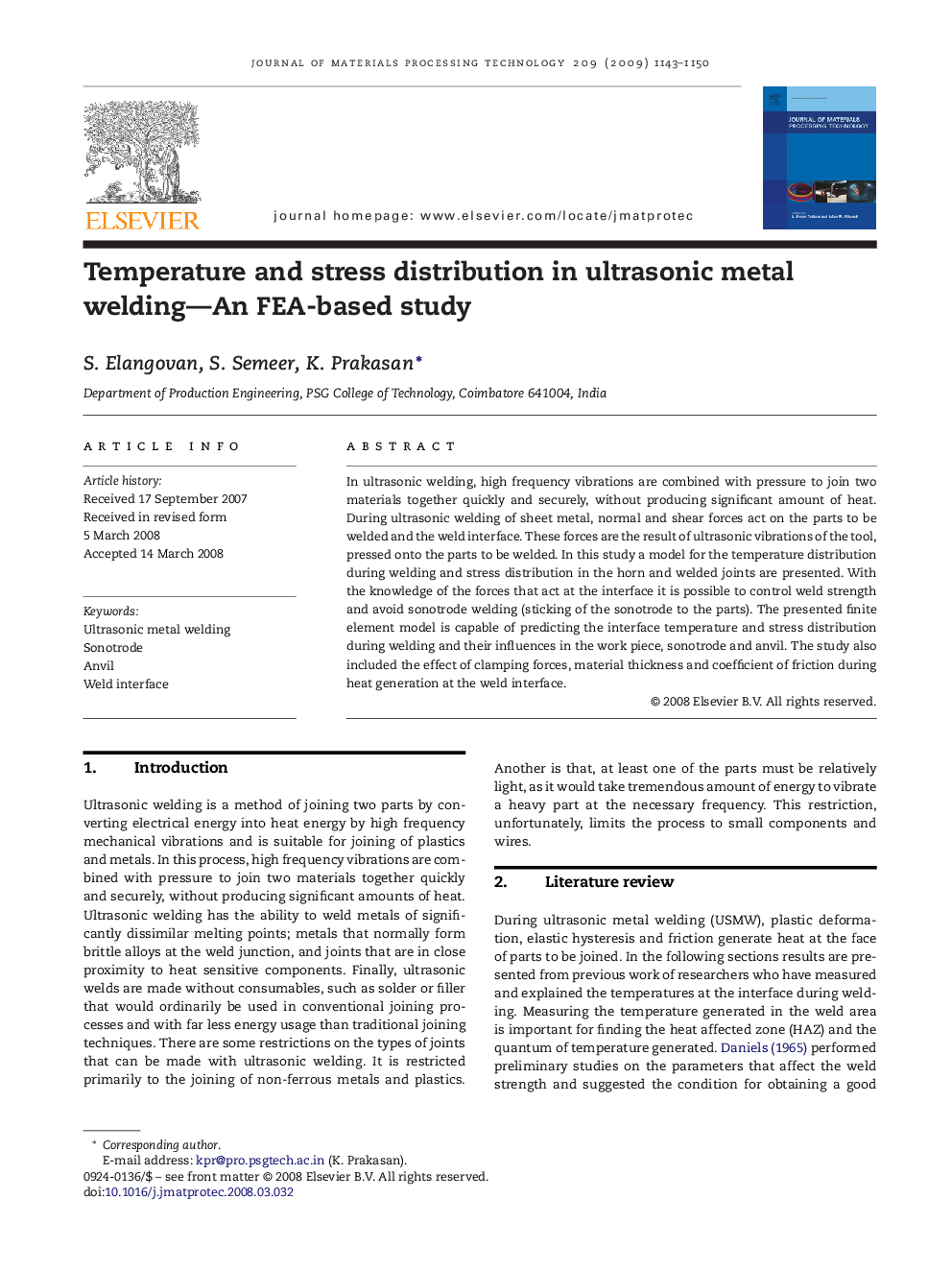| Article ID | Journal | Published Year | Pages | File Type |
|---|---|---|---|---|
| 791490 | Journal of Materials Processing Technology | 2009 | 8 Pages |
In ultrasonic welding, high frequency vibrations are combined with pressure to join two materials together quickly and securely, without producing significant amount of heat. During ultrasonic welding of sheet metal, normal and shear forces act on the parts to be welded and the weld interface. These forces are the result of ultrasonic vibrations of the tool, pressed onto the parts to be welded. In this study a model for the temperature distribution during welding and stress distribution in the horn and welded joints are presented. With the knowledge of the forces that act at the interface it is possible to control weld strength and avoid sonotrode welding (sticking of the sonotrode to the parts). The presented finite element model is capable of predicting the interface temperature and stress distribution during welding and their influences in the work piece, sonotrode and anvil. The study also included the effect of clamping forces, material thickness and coefficient of friction during heat generation at the weld interface.
